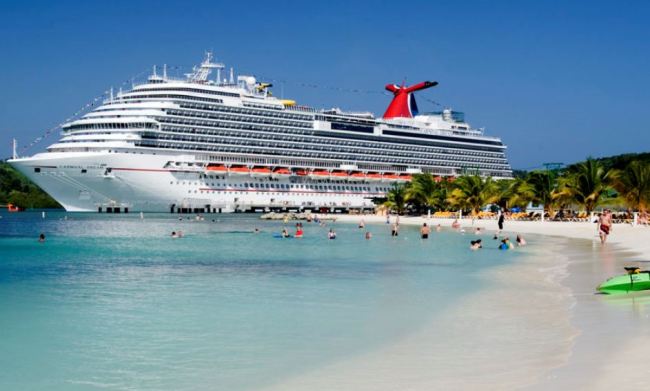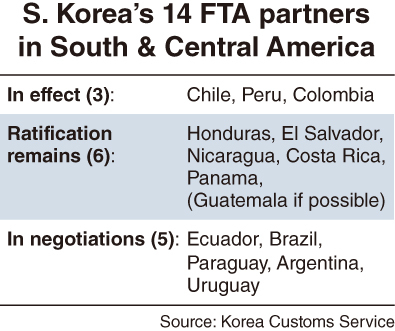SEJONG - South Korea is expanding its economic partnership with South and Central American countries, which involves co-development projects on maritime affairs in the logistics and tourism segment.
Earlier this year Korea signed a free trade agreement with five Central American countries -- Honduras, El Salvador, Nicaragua, Costa Rica and Panama -- which made it the first Asian country to reach the deal with a Central American trade bloc. And Guatemala is set to join the bloc after the bilateral pact takes effect, according to the Ministry of Trade, Industry and Energy.
In addition, free trade agreement negotiations between the nation and four South American republics -- Brazil, Paraguay, Argentina and Uruguay -- are already underway.
According to the Ministry of Oceans and Fisheries, Korea has been involved in a series of talks with its Nicaraguan counterpart to improve harbor conditions to attract global cruise vessels.
Ports in Central America -- both for the Caribbean Sea and Pacific Ocean sides -- are among the top cruise tourist destinations. However less-developed passenger terminals at some of them have made huge ships anchor off the harbors, meaning cruise tourists still have to use shuttle boats rather than walk ashore to reach the destinations.
 |
A cruise ship is anchored at Mahogany Bay in Honduras. (Aqua Marine) |
One of the less-developed is San Juan del Sur, a southwestern cruise-oriented port in Nicaragua. Its beach and a 134-meter-high Jesus statue in the bay are popular among tourists.
The Oceans Ministry held detailed talks late November in Nicaraguan capital Managua. The Nicaraguan government has reported mapped out plans to modernize harbors and upgrade passenger terminals in coordination with FTA counterpart Korea.
The ministry is also pinning hopes on opening the scope of territory of talks to Honduras and Costa Rica for the west Caribbean coastline joint development.
Simultaneously, ministry officials embarked on partnership negotiations with Brazil, which has beautiful beaches and harbors toward the southern Atlantic Ocean. The South American powerhouse has been relatively conservative in attracting foreign capital in vitalizing harbor facilities, despite growing demand for the tourism and logistics industry.
Recently, turning from its earlier stance, Brazil has unveiled its position to further expand Santos, the largest container harbor in the South and Central Americas, by 2024, which is aimed at extended logistics capacity worth 230 million tons per annum.
It is the world’s fifth-largest country in terms of both land and population.
“Our enterprises have been difficulty in making inroads into the South and Central Americas,” said ministry director general Rim Hyun-cheol. “To help them realize winning facility-construction orders, the government will take a pioneer role, fueled by the free trade pact.”
For the South American part, more and more cruise tourists focus on port cities such as Fortaleza, Porto Alegre, Montevideo and Buenos Aires, alongside traditionally popular destinations like Rio de Janeiro and Sao Paulo.
Kim Se-yule, the cruise division head of Onlinetour.co.kr, predicted, “South America will come under the spotlight as the eventual destination for outbound tourists in the coming years.” Kim said he hopes for a successful result of the free trade talks between South Korea-South American trade bloc Mercosur, adding that “a deal could narrow the physical distance between the antipodes on the globe.”
 |
(Korea Herald) |
Korea and the four Mercosur countries, including Brazil, began their negotiations in the second quarter of 2018.
South Korea has signed agreements with Chile, Peru and Colombia in turn. Negotiations with Ecuador are underway.
Meanwhile, the South Korea-Central America free trade agreement outlines agreements on commodities, investments and intellectual property. Via ratification of respective legislative bodies, the mutual sides will eliminate tariffs on 95 percent of goods traded between them, in some cases effective immediately and others in phases.
Under the pact, Korea could import Central American coffee at lower costs. The counterpart’s people could have cheaper access to Korean passenger cars.
According to the Korea Institute for International Economic Policy, the Agreement is projected to bring the effect of pulling up Korea’s gross domestic product by 0.02 percent for the coming decade.
By Kim Yon-se (
kys@heraldcorp.com)









